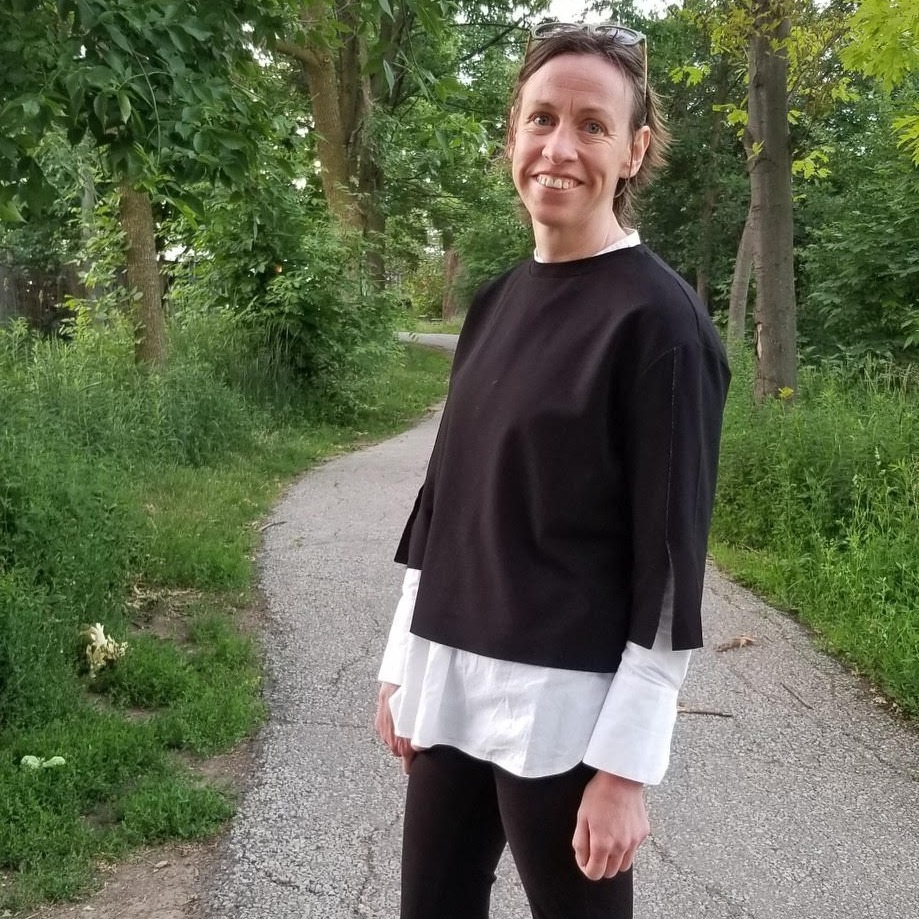As part of the podcast series, “ArtsAbly in Conversation,” Diane Kolin interviewed Dr. Eliza Chandler, associate professor in the School of Disability Studies at Toronto Metropolitan University in Toronto, Canada. Dr. Chandler is deeply involved in disability arts and its connections to disability rights and justice.

BEING Studio

Located in Ottawa, BEING supports artists with developmental disabilities who are working in visual art and creative writing.
Dr. Chandler and a team of collaborators work with them in the context of a project called “Disability Arts Histories and Legacies: Animating BEING Studio’s Archive.”
Tangled Art + Disability

Before being an associate professor at TMU, Dr. Eliza Chandler was the artistic director of Tangled Art + Disability. She was the first person with a disability to hold this position in the arts organization.
Based in Toronto, Ontario, Canada, Tangled Art + Disability’s aim is to boldly redefine how the world experiences art and those who create it. This not-for-profit art + disability organization is dedicated to connecting professional and emerging artists, the arts community, and a diverse public through creative passion and artistic excellence. Their mandate is to support disability-identified artists, to cultivate Disability Arts in Canada, and to enhance access to the arts for artists and all audiences.
Tangled Art + Disability website
Bodies in Translation

Dr. Chandler is one of the co-directors of Bodies in Translation.
The full title of this project is: Bodies in Translation: Activist Art, Technology, and Access to Life (BIT). It consists of a multidisciplinary, university-community research project that at its core, aims to cultivate and research activist art. In this project, ‘activist art’ refers to: disability art, Deaf art, Mad art, aging and e/Elder art, fat art, from a decolonizing and crippled lens.
This website contains many useful resources, publications, and an artists directory.
This last section states: “The Arts and Activism Directory (AAD) is co-produced by Bodies in Translation and Tangled Art + Disability. AAD is meant to recognize, commemorate, and document activism in the arts. The purpose is to highlight and profile artists who are exploring activism and social, cultural and political resistance in their practice. We use the term “activist art” to refer to Disability art, d/Deaf art, Mad art, aging and e/Elder art, fat art, and Indigenous art. This directory can be used as a resource tool for artists, curators, programmers, researchers and the general public to discover, connect with and directly engage with artists and their work.”
Carmen Papalia: Mobility Device
One of the artists mentioned by Dr. Chandler during the interview is Carmen Papalia, who is blind. “Mobility Device” is a collaborative performance project that started in 2013. During these performances, Carmen Papalia replaces his white cane with alternative systems that serves his mobility as he explores an unfamiliar site or public space.
The following video shows a iteration of the project in 2016. Papalia replaced his cane with a marching band as his primary means of gathering information about his surroundings while exploring Downtown Santa Ana (California, United States). The marching band was The Great Centurion Marching Band from Century High School in Santa Ana, under the direction of Scott Devoe. During Papalia’s walk, the band provided musical cues indicating objects, obstacles and other information that might be relevant to the artist on his journey.
If the video doesn’t play, click on this link to watch it directly on YouTube: Carmen Papalia: Mobility Device

